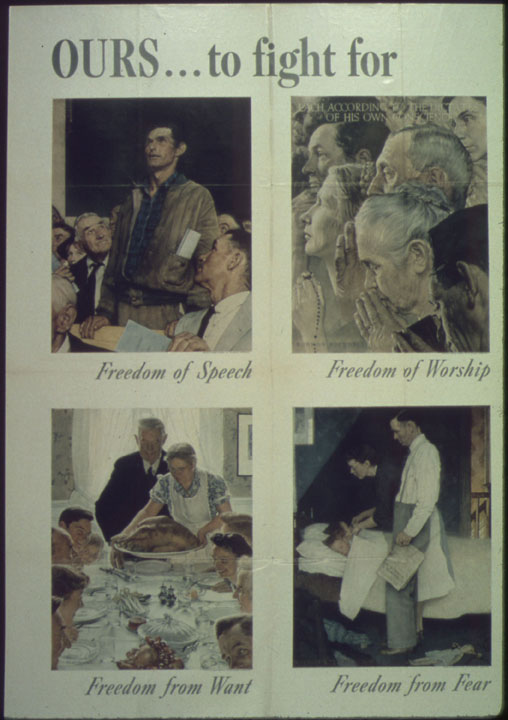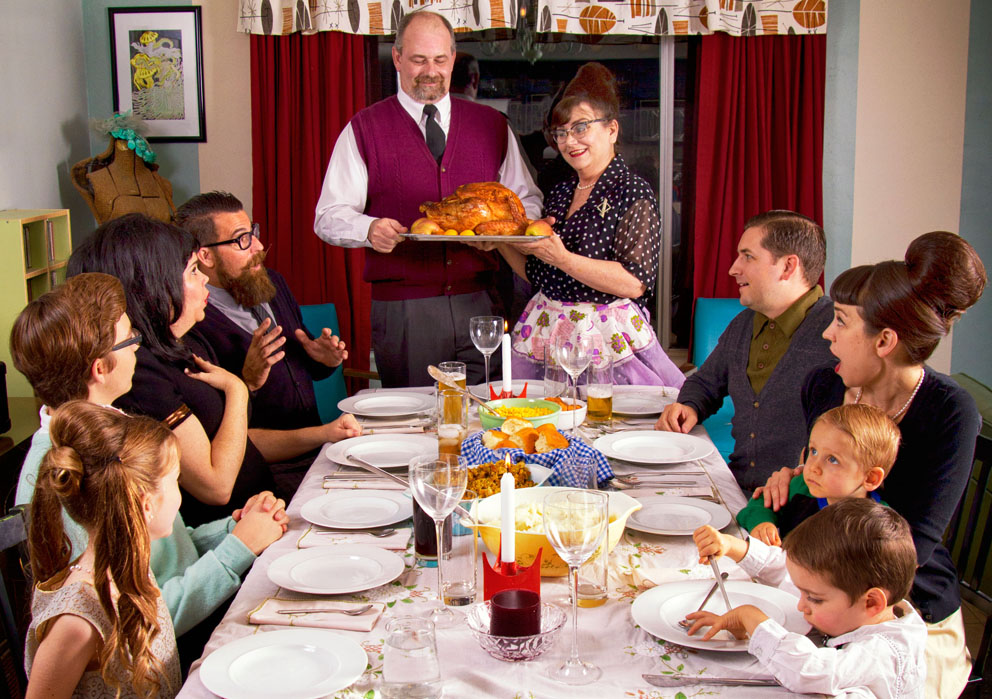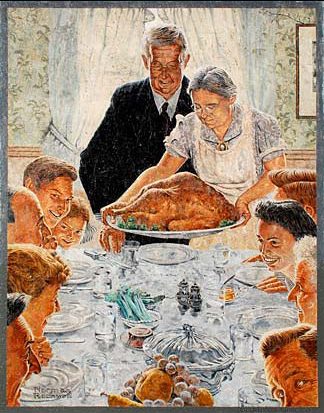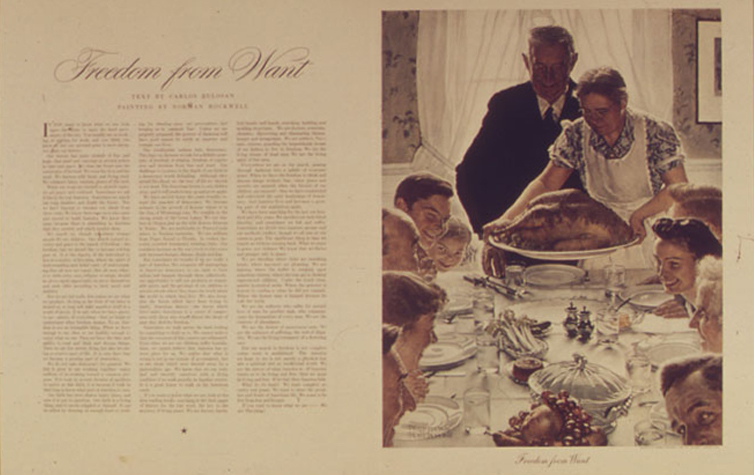In Jan. 6 1941, President Franklin Roosevelt delivered his State of the Union address to a nation that, still bearing the scars of the Great Depression and first World War, was wary of entering another global conflict. Though the country had yet to be threatened, the violence and aggression being suffered by nations around the world required action by the United States, the president argued.
The Inspiration for Rockwell’s Four Freedoms

“Therefore, as your president, performing my constitutional duty to ‘give to the Congress information of the state of the union,’ I find it unhappily necessary to report that the future and the safety of our country and of our democracy are overwhelmingly involved in events far beyond our borders,” Roosevelt said in the address.
Supporting our allies and preparing the country for war were to be done with the aim of ensuring a freer and more secure world, according to the president.
“In the future days, which we seek to make secure, we look forward to a world founded upon four essential human freedoms,” he said in the address. “The first is freedom of speech and expression—everywhere in the world. The second is freedom of every person to worship God in his own way—everywhere in the world. The third is freedom from want, which, translated into world terms, means economic understandings which will secure to every nation a healthy peacetime life for its inhabitants—everywhere in the world. The fourth is freedom from fear, which, translated into world terms, means a world-wide reduction of armaments to such a point and in such a thorough fashion that no nation will be in a position to commit an act of physical aggression against any neighbor—anywhere in the world.”
The speech struck a chord with artist Norman Rockwell. Known for his work with The Saturday Evening Post, Rockwell had been making posters for the Ordnance Department of the U.S. Army but wanted to do more for the war effort. He proposed making a series of posters inspired by the “Four Freedoms” speech but, along with fellow Post cover artist Mead Schaeffer, was turned down by the Ordnance Dept., according to the Norman Rockwell Museum. The Post, though, was interested and commissioned Rockwell to create his interpretations of the Four Freedoms for the magazine.
Rockwell decided to use scenes from everyday life to illustrate the Four Freedoms after being inspired by seeing a man standing up to voice an unpopular viewpoint at a town meeting, according to the museum. That moment was depicted in Freedom of Speech. Freedom from Want depicts a family gathered for a meal, an older couple presenting a turkey to their assembled children and grandchildren. A diverse group is shown in prayer in Freedom of Worship. An image of parents tucking in their children was used for Freedom from Fear.

Publication
Each of these pieces as published in the Post with an accompanying essay by a distinguished writer. The response to the series was overwhelming and the Post soon partnered with the U.S. Department of Treasury to use Rockwell’s Four Freedoms to sell war bonds and stamps. The original paintings toured the country along with paintings by other Post illustrators and original magazine manuscripts. Exhibit visitors were given prints of the four works with their purchase of war bonds. The Office of War Information printed 4 millions sets of the paintings with the message “Buy War Bonds” that were distributed to schools and institutions in the US and abroad, according to the Norman Rockwell Museum.
These works have become iconic, with Freedom from Want earning special status as a template for a variety of artists, photographers, filmmakers and even businesses—from The Simpsons to Tylenol—looking to portray family togetherness, particularly at Thanksgiving.
Legacy
“Not all Thanksgivings, or families, are as harmonious or jolly as Rockwell’s, but his illustration creates a picture of warmth and plenty that tugs at the heartstrings of many Americans,” Bruce Cole, senior fellow at the Ethics & Public Policy Center in Washington, DC, and former chairman of the National Endowment for the Humanities, says. “Rockwell’s vision of America, while idealized, is always optimistic and comforting. That is why he has remained our most well-known and beloved artist/storyteller.”

Photographer Danny Raustadt Bigger Picture Images of found inspiration in Freedom from Want for a series of family portraits.
“Norman’s work captures generations of the American family and our American holiday so beautifully,” he says.

Danny worked with fashion designer Angela Johnson to give the Rockwell image an Atomic-Age makeover with her family.
“I thought it would be fun and a challenge to do something similar,” he says, adding that, “Angela offered her wonderful family, her home, and they cooked an entire Thanksgiving dinner a week before Thanksgiving.”
Freedom from Want is also inspiring visitors to Silverton, Oregon, who see a mural of the piece and the other Four Freedoms paintings in the town known for its murals. Jim Squires, president and co-founder of the Silverton Mural Society finds special meaning in Freedom from Want.
“… I’m involved in the community food bank here in Silverton, and it’s an important thing that people will be able to eat, have enough to eat, and sometimes that’s not the case,” he says, adding, “There’s nothing that pleases me more than to look at that mural and see the smiling faces of the kids, the adults and that big, gorgeous turkey and the china on the table and the family sitting together, it means a lot.”
That connection to the work is something that has endured.
The Four Freedoms “quickly became the best-known and most appreciated paintings of that era,” Saturday Evening Post editor Ben Hibbs said after the series’ release in the magazine. “They appeared right at a time when the war was going against us on the battle fronts, and the American people needed the inspirational message they conveyed so forcefully and so beautifully.”
For more inspiring mid century artists, read on about Ruth Asawa. And of course, don’t forget to follow us on Instagram, Facebook and Pinterest for more Mid Century Modern inspiration!












